The McLean Family: New Zealand Sheep Nobility
Article explaining the colonial development of sheep farming in the South island of New Zealand. Supporting our escorted small group tour for mature and seniors travellers of the South island that explores gold and sheep down south. Learn about Christchurch and Dunedin on this tour for couples and solo travellers.
2 Feb 21 · 13 mins read
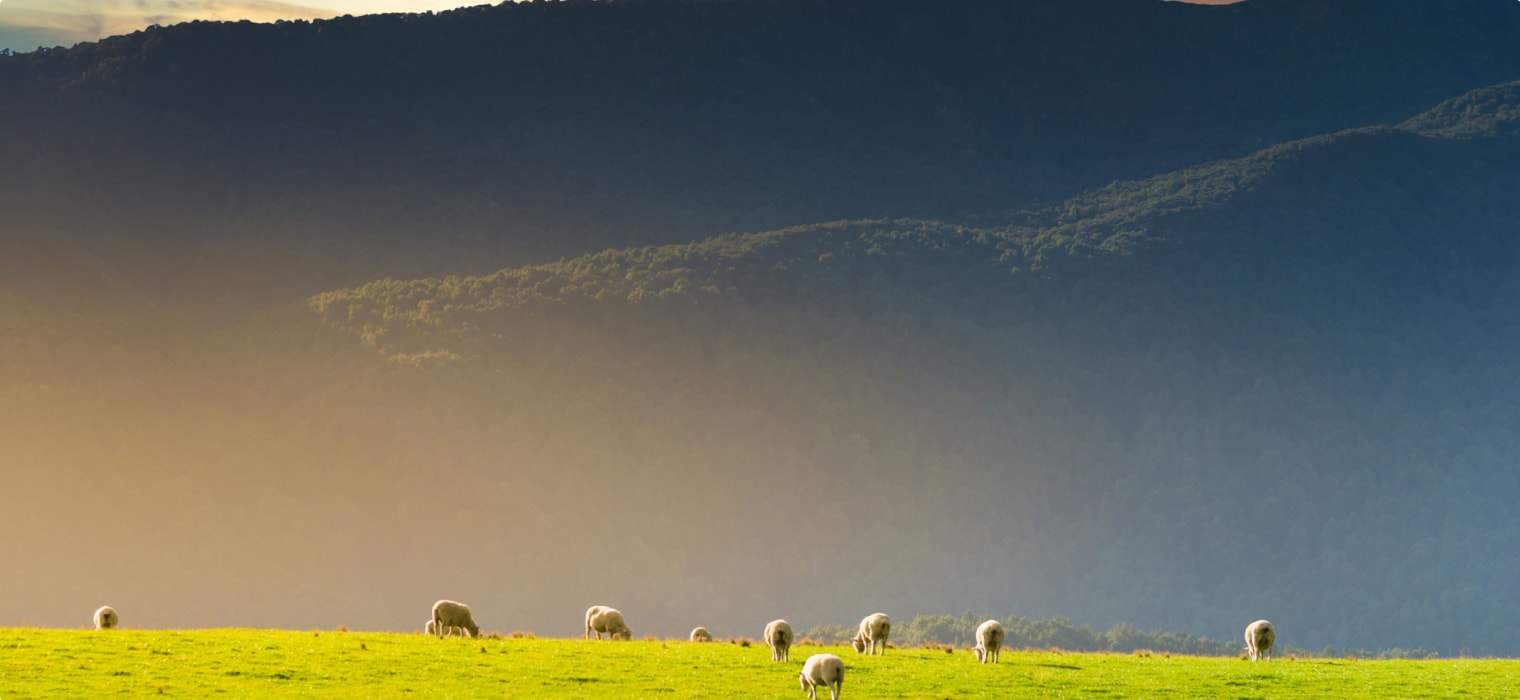
The McLean Family influence New Zealand Landscapes
By Marco Stojanovik
In the mid-19th century the McLean family of Coll, Scotland, were unlikely candidates to become sheep nobility. In the late 1830s, they were literally starving to death on their tiny island in the Inner Hebrides, devastated by multiple disasters that brought a scarcity of food. But courage and determination would prevail, as the widowed Mary McLean brought her five children to first Australia and then New Zealand to build a new life. There through hard-work and enterprise, the family rose through the ranks to eventually became rich land holders, and by the 1870s the brothers John and Allan had the largest number of sheep in New Zealand.
This article explores the fascinating story of the McLean family and their estate, particularly the Morven Hills and Waikakahi runs and the houses “The Valley” and “Holly Lea” (“McLeans Mansion”). Much of the information from this article is drawn from the third chapter of Bruce Ansley’s Down South: In Search of the Great Southern Land. It is intended as background reading for Odyssey Traveller’s tour of New Zealand’s South Island, which focuses on the history of the initial period of European settlement of New Zealand on the South Island and their co-existence with the Maori people.
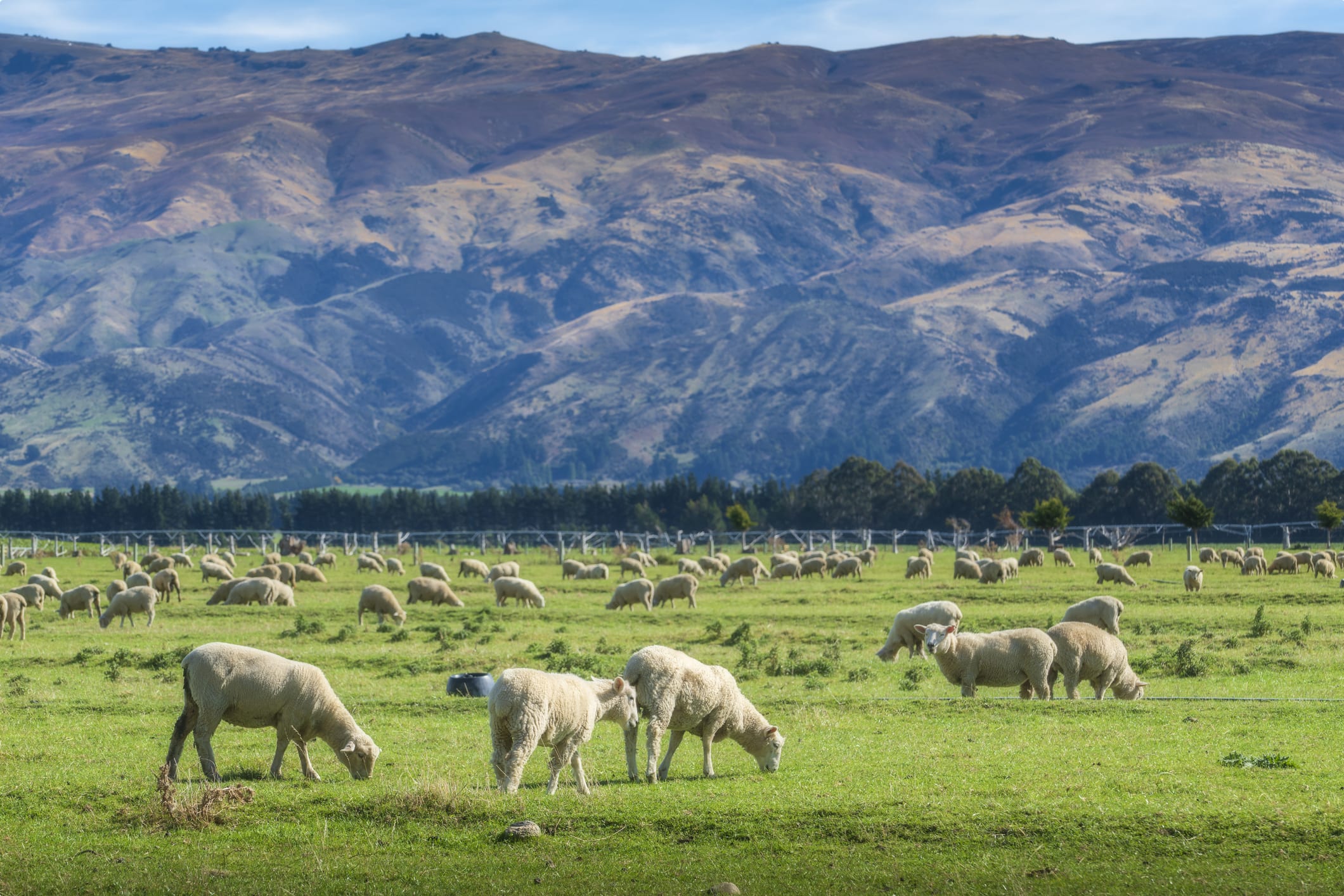
The McLeans Leave Scotland
The McLean family belonged to a well-known Clan of the same name, a branch of which had controlled the inner Hebridean island of Coll, Scotland, for some 500 years. During the 1830s, Alexander McLean, his wife Mary, and their five children shared the island with perhaps 1000 other people.
Initially, the family sustained itself by the large tracts of land they owned on the islands of Tiree and Mull as well as on the mainland at Mowern and Ardnamuchan. Their livelihood was drawn from the combination of cattle grazing and the production of potash from the burning of kelp or other seaweed. However, as conditions detreated over the years, Alexander was forced to provide for his family as part of a subsistence economy, taking on various occupations including farmer, fisherman and cooper.
He did not live as long as he had hoped, however. During a storm one bitter winter in 1936 his small fishing boat was dashed to pieces on the rocky coast of Coll. He was saved from the sea, but he was so badly injured that he later died.
Mary attempted to maintain the farm at Lagmhor while raising the five children, living off fish and potatoes they grew. However, four years later a great disaster overtook the Hebridean Islands. First, the market for kelp, a seaweed, collapsed; and then potato blight struck the islanders’ main crop. This era is still referred to as the ‘dark forties’ as a scarcity of food brought starvation and suffering.
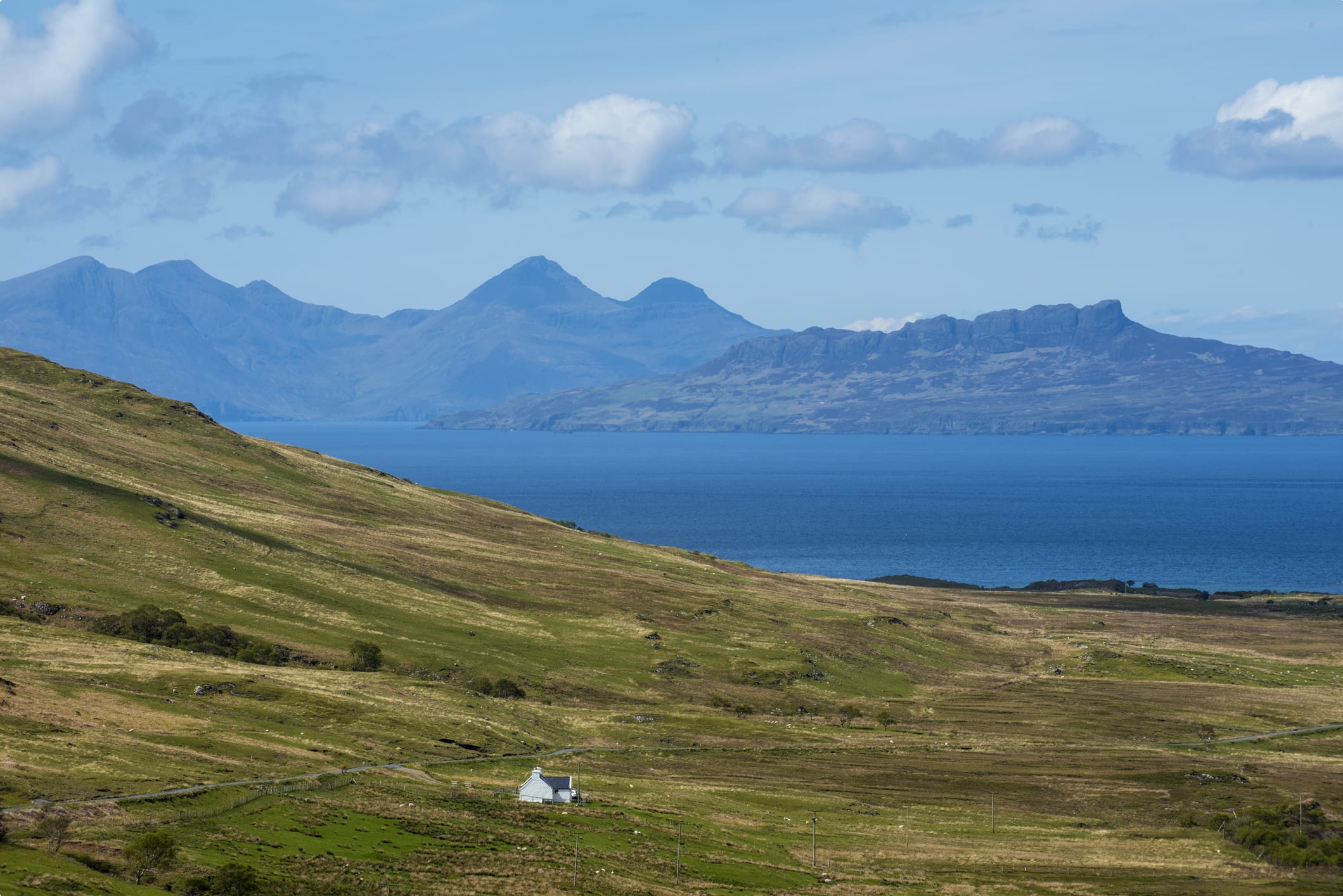
Mary could no longer make a living off the lands left to her and, like many families on the island, the McLeans were reduced to living on seaweeds such as dulse and carrageen. The choice soon became clear to Mary and almost everyone on Coll: leave or die. Most people left in search of a new home and a better life, some going to South Africa, others to Canada. Mary decided on Australia.
Life in Australia
On 23 January 1840, the brave and determined Mary McLean, 53 years of age, arrived in Australia with her three sons John, Allan, and Robertson, and two daughters Alexandrina and Mary. Their talents needed to survive on Coll – essentially determination, hard work and enterprise – were ideally suited to a new colony.
The McLean brothers first found employment as shepherds on various Australian runs, earning enough within a decade to buy two west Victorian runs. The family owned these runs from 1848 until the Victorian goldrush broke out in 1851. They then moved to work at the goldfields in Bendigo and Ballarat, prospering as carriers, merchants and gold buyers, as well as operating a small farm.
The story goes that while at work in the goldfields, a Chinese miner, Fan So, swan a river to warn John McLean of a plot to murder him and steal his gold which he had concealed in a tent awaiting the gold escort. The family never forgot Fan So’s warning, establishing an allegiance that would last until Fan’s death.
Arrival in New Zealand
Eventually incredible news came from Britain’s youngest colony, New Zealand, that great swathes of land were being given away for virtually nothing to anyone with the enterprise and the desire to take them up. The government had declared land beyond the coastal plains to be vacant, buying off the Maori owners with simply handfuls of cash or simply ignoring them.
The first few decades of the young colony had been tough as no real mineral deposit of wealth had been discovered in the country and immigration numbers were low. So, the government had turned towards creating incentives to draw young people from the British Isles to come and make their fortune.
All a run-holder had to do was find a good spread of vacant land, roughly mark its boundaries (to the nearest few hundred hectares) and charge off to make it theirs. They had to promise to stock the land with a certain proportion of sheep within nine months and then the government would lease it to them in perpetuity for incredibly low prices.
The 1850s saw a land rush in areas of the South Island as runholders or squatters soon claimed plains, valleys, foothills, and even the most accessible mountains. The McLean family jumped at the opportunity, selling up and shipping across the Tasman to New Zealand in a small schooner along with about 500 sheep, a few cattle and horses, Fan So, and some capital.
Arriving in December 1852, the family quickly set out to claim pretty much everything they could get their hands on. Their first purchase was the 10,000-acre Ashfield Run, also known as the “Waimakariri Station”, on the banks of the Waimakariri River near Christchurch. Although in John McLean’s name, he owned it in partnership with his brothers Allan and Robertson. Here, they built a small wooden house, planted trees to break the north-west winds, and worked the land while their mother baked the bread and bannocks.

Other huge farms soon followed. In October 1853, the brothers took up a run called Acheron Bank, on the south side of Lake Coleridge, which they retained for a year before selling as bare land. Then, in 1855, they attained the licence of a 48,000-acre run on the south bank of the Ashburton River, which they named Lagmhor after their birthplace on Coll. Robertson McLean was made manager at first, but soon returned to Scotland where he died in 1871.
Morven Hills Run
The McLean brothers extended their run holding to Otago in 1958, taking up the Morven Hills run at the head of the Waitaki River. The enormous run was, at that time, the largest in New Zealand, consisting of approximately 370,000 acres, its borders stretching 75km north to south alongside Lake Hawea, down the Clutha River, then back up to the Dunstan Range to the Lindis Pass. Combined with the family’s other runs, their holdings weren’t so much a farm than an empire, and Morven Hills was the capital.
John McLean had first sighted the land after climbing a peak near Lake Hawea, known today as Grandview Mountain. Below him lay Lake Hawea and, further to the west, Lake Wanaka and, beyond them both, the great ranges of the south. Most importantly, upon the ranges lay tussock-covered slopes – many thousands of hectares of fantastic sheep country.
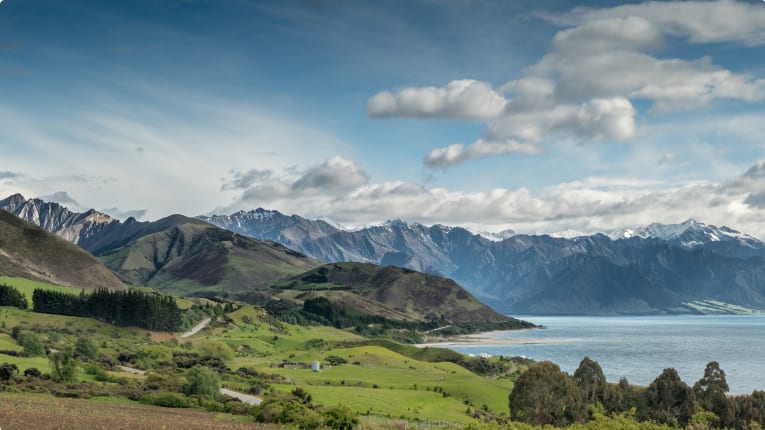
John made his sketch, hastened back to the coast and lodged his claim to the Waste Land Board. At first the board took pause at such a large claim for just one family, but it wasn’t going to get in the way; it existed to facilitate, to encourage farming and settlement in the far reaches of its dominion. So, instead it divided the claim into four: for one for each McLean brother, and one for sister Alexandrina.
Still, the family had to stock the land to meet the Waste Land Board’s demands. The flock rapidly increased, eventually reaching more than 140,000 sheep. At first though numbers may not have been so high enough to meet the demands and the checks of inspectors.
One famous story, that may or may not be true, tells of an inspector being taking to admire a flock of sheep grazing on the pastures. That night John McLean poured him whisky liberally, while the station’s shepherds moved the flock to another block; the next day, when the inspector was checking in that direction, sheep again stretched as far as his eye could see. Another night, another bottle, another pasture, and the same flock was moved under cover of darkness. Everyone was happy.
Morven Hills quickly grew into a small village. The brothers built a homestead of stone on the riverbank, which was accompanied by massive stables, and huts of shearers and shepherds as well as a cookhouse were also erected on the run.
Overshadowing them all, though, was the 19th century Australian Georgian Morven Hills woolshed of superb proportions. A huge stone affair, one of the biggest woolsheds in the country, it accommodated 34 shearing stands (one stand for each shearer). Around 3,400 sheep could be sheared here in a single day; and in 1874, the heyday of the fleece era, 140,000 sheep were shorn here in one 41-day season.
John McLean: Politician and Bank Director
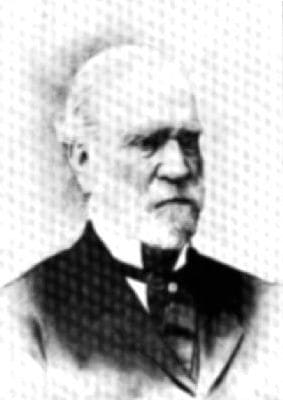
Around this time, John McLean became interested in public affairs. He served on the Otago Provincial Council from March 1871 until the abolition of the provincial government system in October 1876. And he was also a member of the New Zealand Legislative Council from April 1867 to August 1872, when he resigned.
He also became a major shareholder in the Bank of New Zealand and, with his brother-in-law, George, and Mr. Justice Gillies, exposed a scandal that shook the young nation. The bank, one of the country’s most trusted institutions, had lost all its reserve and a third of its paid-up capital through a villainous mix of affairs.
It had lent to the old boys’ network on over-valued assets. A Sydney manager, notorious for gambling, had embezzled a great deal of money. An Adelaide branch had squandered funds in a reckless and disastrous way. And numerous suspicious advances were made in New Zealand without adequate security.
The scandal had been made under the noses of directors such as John, but in the end no one apparently went to jail. It was a good time to be a prominent New Zealander.
Allan McLean and the Waikakahi Station
Meanwhile, by the 1970s, Allan and John McLean had become the owners of New Zealand’s largest sheep flock after steadily acquiring more and more land. First, they had taken up Waitaki Plains and Redcastle in North Otago before acquiring the land that became Waikakahi Station, where they entered into partnership with their sister Alexandrina’s husband, George Buckley, in 1866.
Here, the partners kept buying gradually until 1875, when the whole property at Waikakahi of 79,500 acres was acquired, stretching between the Waitaki and Waihao Rivers and running inland some miles from the coast to Elephant Hill.
At this point, John and Allan bought out Buckley’s share in Waikakahi. The partnership between the brothers then continued for another five years until it was dissolved in 1880 and John offered Allan a choice of all the McLean runs or Waikakahi. Allan chose to retain Waikakahi and continued to freehold the whole run turning it into one of the finest stations in Canterbury, by 1895 carrying almost 70,000 sheep as well as horse teams that ploughed 8,000 acres.

At Waikakahi, Allan lived in his huge 21-roomed two-storey weatherboard homestead known as “The Valley” with his housekeeper, Mrs Emily Phillips. Built around 1874 and still standing today, “The Valley” features peaked gables, long glass doors opening out onto a large veranda, a spacious lounge, a long billiards room, china-blue scroll pattern wallpaper, a servant’s area, and four spacious upstairs bedrooms.
Around his homestead he planted ten acres of magnificent Victorian gardens, five acres of orchards, and about thirty acres of a plantation of trees ordered from all over the world. Meanwhile, peacocks strutted on the lawns and around a large ornamental lake.
Allan himself was a somewhat eccentric figure. He frequently wore plum-coloured suits and rode around in a white wagonette, an open carriage which he referred to as the Yankee Express. He entertained in a lavish fashion and was well known for his extravagant parties.
However, he was also known as a generous man. While he always expected a fair day’s work from his employees, he always paid good wages. Plus, he consistently demonstrated concern for the poor, maintaining a large bunkroom for swaggers on his property and amply providing free meals for them.
The Sale of Waikakahi
Waikakahi was eventually bought by the reforming Liberal Government in 1899 as part of their policy of breaking up many of the vast freehold runs in New Zealand into much smaller farms. The government had made an election promise that it would put more farmers on their own properties and provide them with financial support, partly in response to an expanding market in New Zealand’s meat and dairy products, and partly because it was the equitable thing to do.
The policy was popular with a wider public who had come to resent the land barons who controlled vast areas of countryside and treated them as fiefdom. The McLeans especially became targets. How was it fair that two men should have become so rich from a public asset that could have provided a living for 10 families, or even a hundred?
Waikakahi was the first property so acquired and the second biggest government purchase in Canterbury. It was divided into 130 farms ranging from 45 to 1,473 acres, 14 grazing runs, 47 village sections, and the town of Morven.
Allan McLean was not a willing seller. The story goes that he stayed up all night negotiating with the Minster of Lands about the Government’s proposal, before leaving his home the next morning a very disappointed man, never returning to the district.

McLeans Mansion
Leaving Waikakahi Allan retired to Christchurch, where he had himself built a house of enormous dimensions in a fusion of styles of Jacobean architecture and Victorian features. The house was far bigger and more magnificent than “The Valley”, fabulous for the standards of the day and is monumental even now.
Legend has it that Allan first visited his architects, England Brothers, he was offered the blueprint of a conventional four-roomed cottage, to which he retorted abruptly: “Not Four rooms. Forty!”
In the end a huge, three-storey house was constructed, the largest wooden residence in New Zealand at the time. It contained 53 rooms spread over an area of 23,000 square feet (2,100 square metres) including 19 bedrooms, 6 bathrooms, and servants’ rooms that today would constitute a small apartment block.
On the outside are several domes, towers, cast-iron pinnacles, a brickscape of chimneys, and endless amounts of windows. Features inside include cornices, coffered ceilings, chandeliers, white and black marble fireplaces, and a huge staircase rising heavenwards from the ground wall accompanied by sweeping stair-rails. Meanwhile the walls were originally covered with grand fabrics such as satin brocade and velvet, and lavish period furnishings and other embellishments filled the rooms.
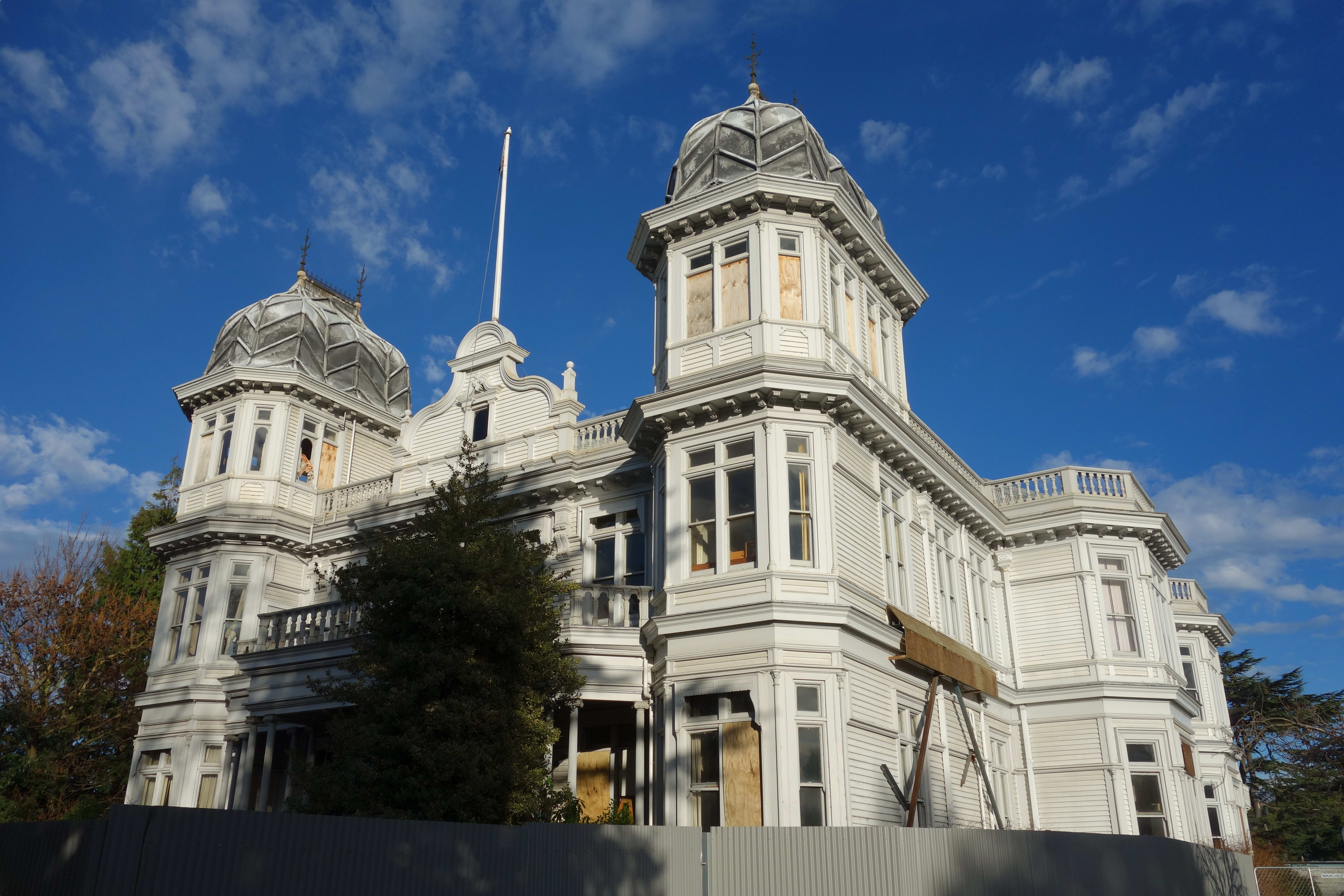
Construction was completed in 1900 and the house was named “Holly Lea”, holly being the McLean plant badge, before later coming to be known more pragmatically as “McLean’s Mansion”. Allan moved in at 78 years of age, spending the next seven years here living in luxury, surrounded by riches, with the aid of his very capable housekeeper, Mrs. Phillips, and staff.
By 1907, Allan’s health had been failing for some time and he had been confined to his house for twelve months after catching a cold. Going to bed one night he was found dead the next morning by his footman.
Under his will, Mclean’s Mansion became the home of the McLean Institute, established for the purpose of providing “a home for women of refinement and education in reduced or straitened circumstances”. And, after making generous provision for his relatives, his housekeeper, and staff, Allan supported the institute with a very handsome endowment of £300,000.
McLeans Mansion was used for this purpose until 1955, when it was sold to the government along with the furniture and fittings. The house is currently registered as a Category I heritage building by the New Zealand Historic Places Trust, and is being restored by McLean’s Mansion Charitable Trust, with plans to partially reopen the building in 2021.
The End of the McLeans
When Allan died in 1907 aged 85m he was buried in Addington Cemetery, Christchurch, alongside his mother Mary, his brother John and sisters Mary and Alexandrina. His mother had died at Waimakariri Station in 1871 at the age of 84. She had spent her final years resting in comfort at a pleasant cottage in Christchurch built for her by Allan with a beautiful garden of trees, shrubs and flowers. The sister Mary had died a few years later in 1975.
John died in 1902 at Redcastle in North Otago having never married. Having disposed of much of his property, he had retired there and built a beautiful home. This land later became St. Kevin’s College. Alexandria died a fortnight after John. She was survived by her son St John Buckley, who followed his family’s tradition of working on farms and building grand houses.
Small Group Tour of New Zealand’s South Island
Odyssey Traveller is pleased to introduce our new small group tour of New Zealand, focusing on the beautiful South Island. Our tour is for up to 15 people, typically mature and senior travellers joining as a couple or as solo traveller. It is will be led by an Odyssey tour guide and joined by expert local guides who will impart their knowledge about the history, Maori culture, and landscapes of places we will visit. Our itinerary gets off the beaten track, following the east coast of the South Island through to the West coast, before returning to Christchurch.
The arrival of Europeans – mostly British settlers – in New Zealand set in motion a startling and ultimately largely successful co-existence with the Maori people that will be the focus of this small group South Island tour of New Zealand.
This particular tour has periods of free time built into the itinerary, allowing you to explore each destination at your own pace, and choose from a variety of available activities. This way, we make sure that there is something to enjoy for every kind of traveller.
Odyssey Traveller has been conducting educational tours since 1983 designed for small groups of mature and senior travellers, focusing on the history, culture, wildlife, and architecture of our destinations. Our small group tours are typically between 6 to 12 people, and are cost inclusive, encompassing accommodation, attraction entries, and transport. For more information, click here, and head to this page to make a booking.
Articles about New Zealand published by Odyssey Traveller:
- Questions about New Zealand
- Foundations for democracy in New Zealand: 900s – 1945
- Definitive Guide to Auckland, New Zealand
- Wellington
- Auckland
For all the articles Odyssey Traveller has published for mature aged and senior travellers, click through on this link.
External articles to assist you on your visit to New Zealand:
Related Tours

17 days
Feb, Mar, OctSmall group tour of New Zealand's South Island
Visiting
Escorted 17 day small group tour of the West and East coast of New Zealand’s South island. Off the beaten track, for like minded people curious about history, culture, wine and landscapes. Your tour director and local guides share their knowledge with you the traveller on this New Zealand tour for senior travellers.
From A$13,365 AUD
View Tour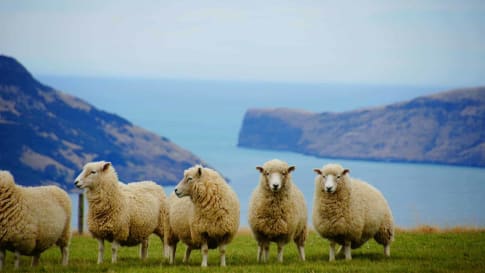
14 days
Aug, Sep, Oct, Nov, Feb +1Small group tour of New Zealand's North Island
Visiting
Escorted 13 day small group tour of the East coast of New Zealand’s North island. Off the beaten track, for like minded people curious about history, culture, wine and landscapes. Your tour director and local guides share their knowledge with you the traveller on this New Zealand tour for senior travellers.
From A$11,495 AUD
View Tour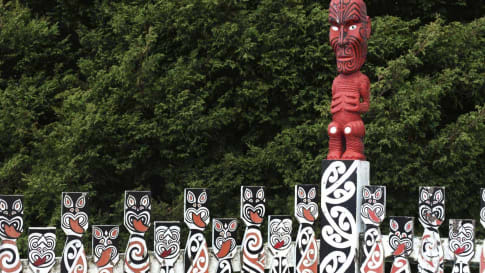
17 days
Oct, Feb, Apr, Sep, MarNew Zealand: An Odyssey Down Under
Visiting
A guided small group tour of both the North island and the South island. Your travel itinerary includes Auckland, Rotorua, Milford Sound, Queenstown and Christchurch. Maori culture also forms part of the journey to provide a memorable New Zealand tour experience.
From A$12,595 AUD
View Tour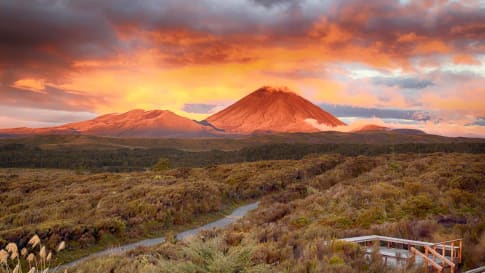
14 days
Mar, Sep, NovSmall group walking tour of New Zealand
Visiting
Escorted 14 day small group walking tour of New Zealand. Off the beaten track, for hiking fit like minded people curious about history, culture wine and landscapes.
From A$13,995 AUD
View TourArticles

Alpine Fault at Gaunt Creek, New Zealand
Article for mature and senior travellers visiting New Zealand and in particular the South island. Techtonic activity is always close and this article shares some information with the reader joining a small group tour as a couple or solo traveller.

Castle Hill, New Zealand
Castle Hill, New Zealand In a country famous for beautiful landscapes, only Castle Hill has received one particular honour: being declared by the Dalai Lama as a ‘spiritual centre of the universe’. Castle Hill is…

Christchurch, New Zealand
Explore the sights and history of Christchurch, the largest city of New Zealand's south island. Odyssey offers small group tours for mature and senior travellers, couples, and solo travelers to sites across New Zealand.

Fiordland National Park, New Zealand
Explore the sights and wonders of Fiordland National Park, home to some of New Zealand's most stunning natural landscapes. Odyssey offers small group tours for mature and senior travellers couples and solo travelers to Fiordland and New Zealand.
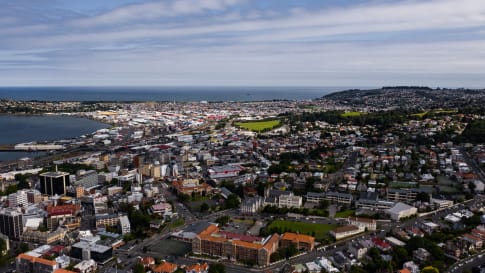
Founding Dunedin - Gold Rush
Article explores for Senior and mature traveller couples or solo travellers in a small group tour, the history of gold mining during the late 19th century rush era in Otago, a region of New Zealand located in the lower half of the South Island, the regional capital is Dunedin.
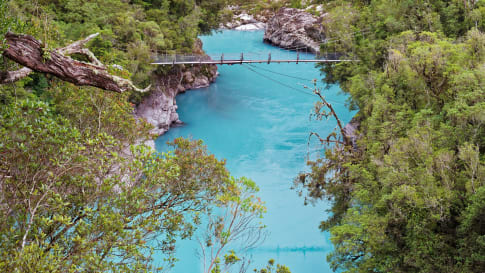
Hokitika, New Zealand
Hokitika, New Zealand The epitome of a Gold Rush ‘boomtown’, Hokitika, on the West Coast of the South Island of New Zealand is now officially known as the ‘cool little town’, an ideal gateway for…

Kaikoura, New Zealand
Kaikoura, New Zealand Perched spectacularly between the mountains and the sea, the small town of Kaikoura, New Zealand offers incredible opportunities for marine wildlife spotting. Kaikoura is on the South Island of New Zealand, around…

Milford Sound, New Zealand
Explore the sights and wonders of Milford Sound (Piopiotahi), one of the world's most stunning natural wonders. Odyssey offers small group tours for mature and senior travellers couples and solo travelers to Milford Sound and New Zealand.
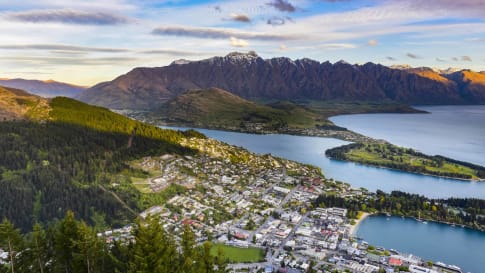
Queenstown, New Zealand
Queenstown is a resort town on the South Island of New Zealand. Built on the lakeshore of Lake Wakatipu, the town provides amazing views having the Remarkables Mountain Range as its background.
Questions about New Zealand for senior travellers
Questions About New Zealand for senior travellers Odyssey Traveller specialises in crafting unforgettable experiences for senior and mature-aged travellers interested in learning as a couple or as a solo traveller when they travel. Providing adventure…

Stewart Island, New Zealand
Explore on a small group walking tour of New Zealand for active mature or senior travellers Stewart island. Suitable for couples or solo travellers who enjoy hiking/walking tours.
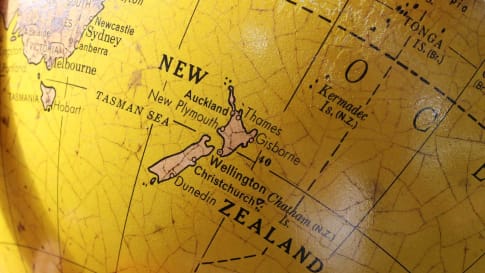
The Arrival of Europeans in New Zealand
Explore the history and legacy of early European Settlement in New Zealand. Odyssey offers small group tours for mature and senior travellers couples and solo travelers to locations across New Zealand.
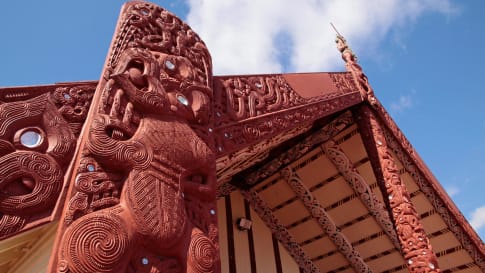
The Maori, New Zealand
Explore the history and rich heritage of the Maori people, the first and original inhabitants of New Zealand. Odyssey offers small group tours for mature and senior travellers, couples, and solo travelers to sites across New Zealand.
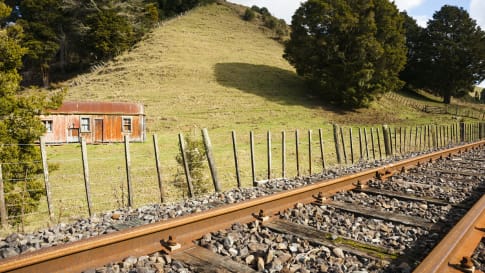
The Nelson Railway to Nowhere, New Zealand
Article for mature and senior travellers interested in the history of New Zealand when considering a small group tour with like minded people. Click to see the range of New Zealand vacations offered.

